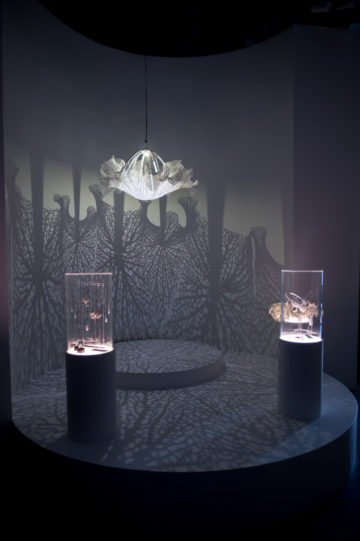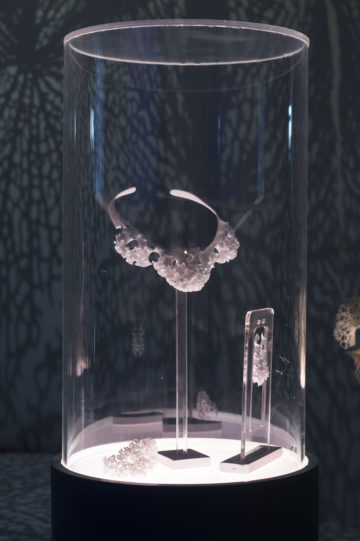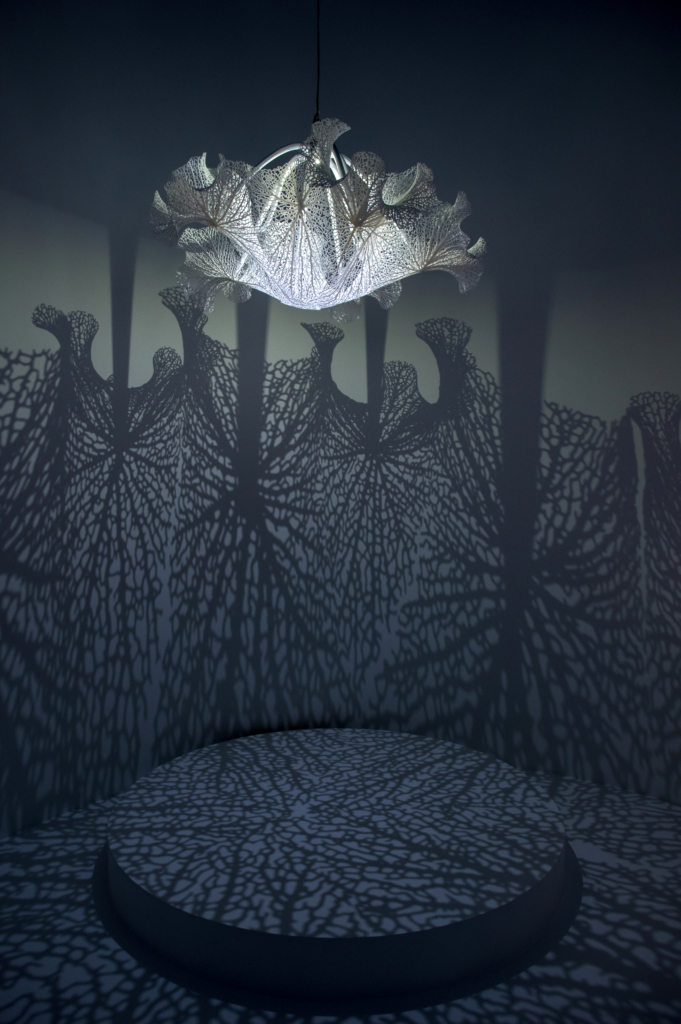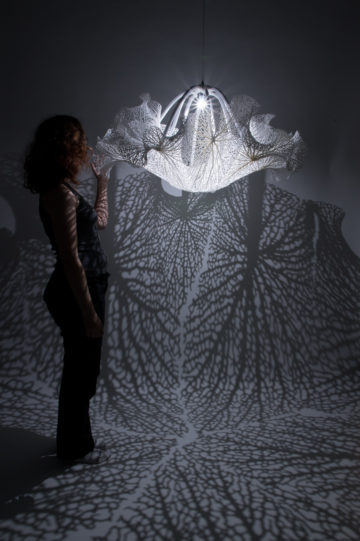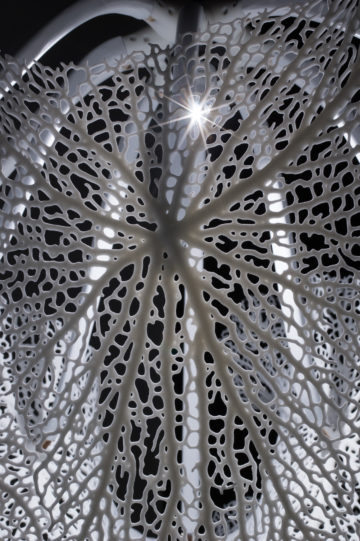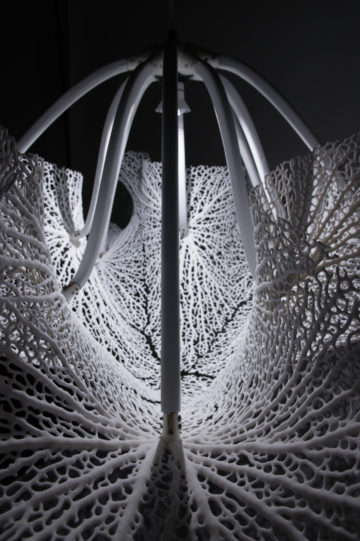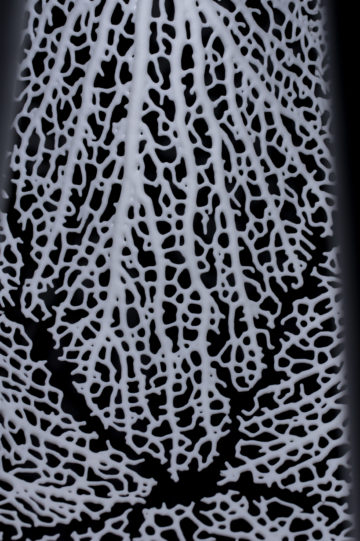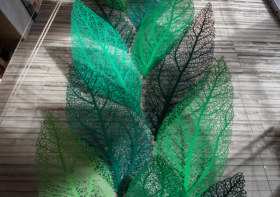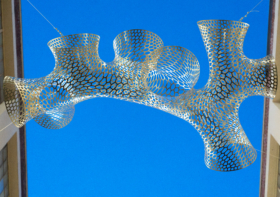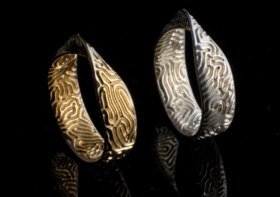Floraform Chandelier at World Expo 2017 in Astana, Kazakhstan
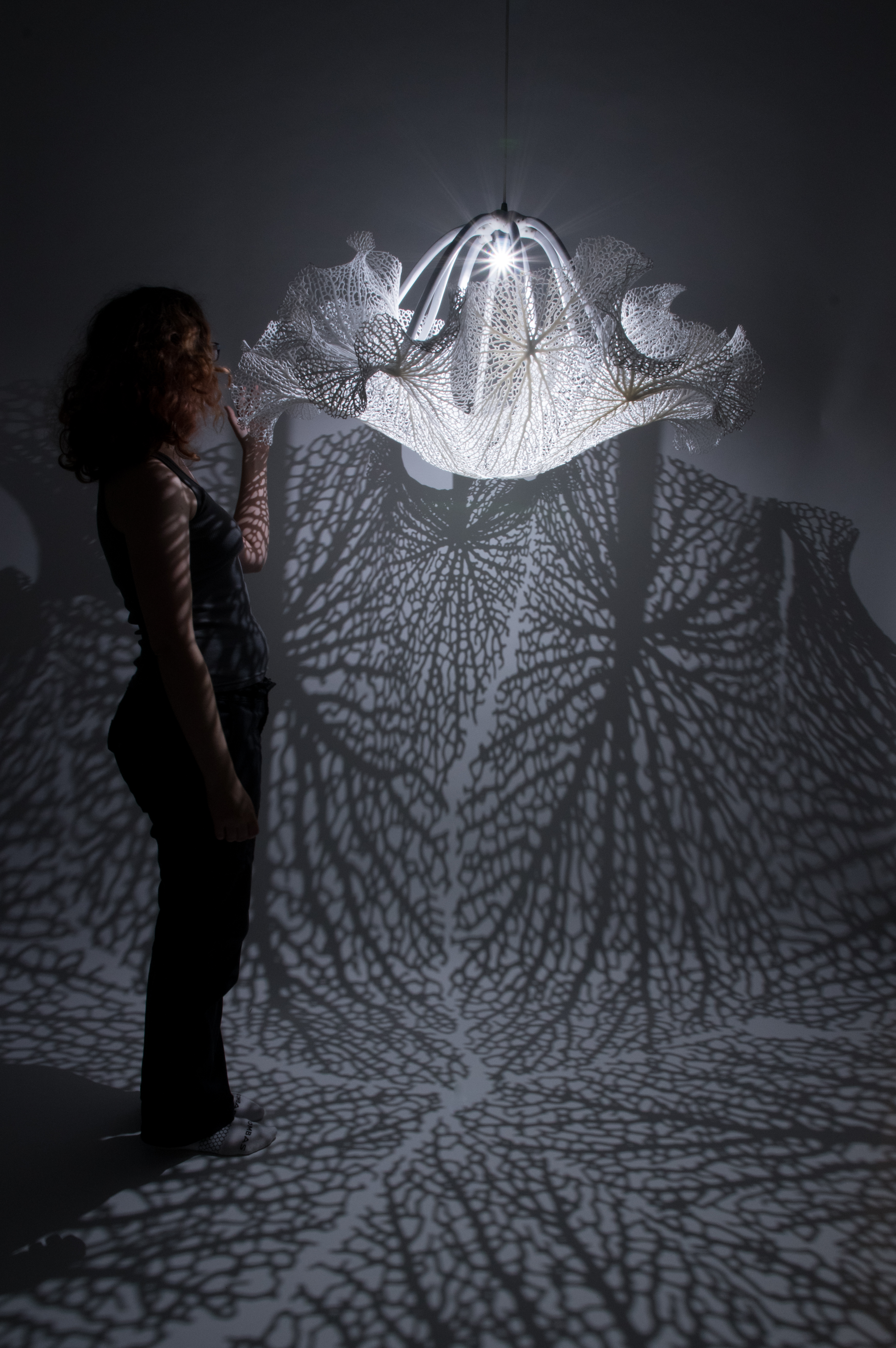
Floraform Chandelier, 2017 (1.1 x 1.1 x .53 m), Selectively Laser Sintered nylon, wood and LED lighting.
We recently returned from Kazakhstan, where we debuted the largest 3D-printed piece Nervous System has made to date. Spanning 3.6 feet, the Floraform Chandelier is an undulating flower-like surface composed of ten branching structures made of 3D-printed nylon. The large yet airy design casts a dense forest of shadows that envelop the viewer in an environment of algorithmically grown plant forms.
The Floraform Chandelier was created for Artists & Robots, an exhibit running from June 10 to September 10, 2017 as part of the World Expo in Astana.
Generative Growth Process
This animation shows the growth process of an early sketch for the chandelier.
The structure was grown by two generative algorithms created by Nervous System: Floraform and Hyphae. Floraform explores the development of surfaces through differential growth inspired by the biomechanics of growing leaves and blooming flowers. Hyphae is an iterative branching system based on how veins form in leaves.
The exhibition also includes a selection of 3D-printed jewelry pieces generated by Floraform and materialized in nylon and sterling silver.
About the Exhibition
The Artists & Robots exhibition was curated by Miguel Chevalier and Jerome Neutres (Réunion des musées nationaux – Grand Palais). It includes the work of 17 artists including Nervous System, Quayola, Michael Hansmeyer, Stelarc, and Rafael Lozano-Hemmer.
ARTISTS & ROBOTS presents a selection of works made by art machines, through a variety of research techniques and mediums. In a spectacular and playful space of 733 sq meters, ARTISTS & ROBOTS is like an interactive journey through the dream of contemporary art machines.
The exhibition presents the different mediums and tools of those new art experiences: computers and generative algorithms, interactive artistic software; 3D printing; painting robots; drawing robots; sculpting robots. During the exhibition, some artworks will be made in real time before the eyes of the visitors. The smell of the material, the sound of the engines, and the interaction with the machine. All the senses will be engaged. Rather than addressing the theme of art and science, this exhibition aims to focus on the relationship between humans and machines. Using advances in technology to improve and renew the artist possibilities, ARTISTS & ROBOTS explores a form of art which can be seen as the energy of the future for artists.

